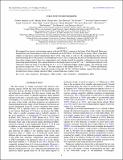Files in this item
Cold dust in hot regions
Item metadata
| dc.contributor.author | Sreenilayam, G. | |
| dc.contributor.author | Fich, M. | |
| dc.contributor.author | Ade, P. | |
| dc.contributor.author | Bintley, D. | |
| dc.contributor.author | Chapin, E. | |
| dc.contributor.author | Chrysostomou, A. | |
| dc.contributor.author | Dunlop, J.S. | |
| dc.contributor.author | Gibb, A. | |
| dc.contributor.author | Greaves, J.S. | |
| dc.contributor.author | Halpern, M. | |
| dc.contributor.author | Holland, W.S. | |
| dc.contributor.author | Ivison, R. | |
| dc.contributor.author | Jenness, T. | |
| dc.contributor.author | Robson, I. | |
| dc.contributor.author | Scott, D. | |
| dc.date.accessioned | 2014-08-27T15:31:02Z | |
| dc.date.available | 2014-08-27T15:31:02Z | |
| dc.date.issued | 2014-03-01 | |
| dc.identifier | 143762330 | |
| dc.identifier | 2778a660-4ae7-4c34-aba1-196f77065ca8 | |
| dc.identifier | 84894202856 | |
| dc.identifier | 000331125600008 | |
| dc.identifier.citation | Sreenilayam , G , Fich , M , Ade , P , Bintley , D , Chapin , E , Chrysostomou , A , Dunlop , J S , Gibb , A , Greaves , J S , Halpern , M , Holland , W S , Ivison , R , Jenness , T , Robson , I & Scott , D 2014 , ' Cold dust in hot regions ' , Astronomical Journal , vol. 147 , no. 3 . https://doi.org/10.1088/0004-6256/147/3/53 | en |
| dc.identifier.issn | 0004-6256 | |
| dc.identifier.uri | https://hdl.handle.net/10023/5262 | |
| dc.description | The James Clerk Maxwell Telescope is operated by the Joint Astronomy Centre on behalf of the Science and Technology Facilities Council of the United Kingdom, the National Research Council of Canada, and (until 2013 March 31) the Netherlands Organisation for Scientific Research. Additional funds for the construction of SCUBA-2 were provided by the Canada Foundation for Innovation. | en |
| dc.description.abstract | We mapped five massive star-forming regions with the SCUBA-2 camera on the James Clerk Maxwell Telescope. Temperature and column density maps are obtained from the SCUBA-2 450 and 850 μm images. Most of the dense clumps we find have central temperatures below 20 K, with some as cold as 8 K, suggesting that they have no internal heating due to the presence of embedded protostars. This is surprising, because at the high densities inferred from these images and at these low temperatures such clumps should be unstable, collapsing to form stars and generating internal heating. The column densities at the clump centers exceed 1023 cm-2, and the derived peak visual extinction values are from 25 to 500 mag for β = 1.5-2.5, indicating highly opaque centers. The observed cloud gas masses range from ~10 to 103 M ☉. The outer regions of the clumps follow an r-2.36±0.35 density distribution, and this power-law structure is observed outside of typically 104 AU. All these findings suggest that these clumps are high-mass starless clumps and most likely contain high-mass starless cores. | |
| dc.format.extent | 16 | |
| dc.format.extent | 4026573 | |
| dc.language.iso | eng | |
| dc.relation.ispartof | Astronomical Journal | en |
| dc.subject | Dust | en |
| dc.subject | Submillimeter: ISM | en |
| dc.subject | Stars: formation | en |
| dc.subject | ISM: clouds | en |
| dc.subject | H II regions | en |
| dc.subject | extinction | en |
| dc.subject | QB Astronomy | en |
| dc.subject.lcc | QB | en |
| dc.title | Cold dust in hot regions | en |
| dc.type | Journal article | en |
| dc.contributor.sponsor | Science & Technology Facilities Council | en |
| dc.contributor.institution | University of St Andrews. School of Physics and Astronomy | en |
| dc.identifier.doi | https://doi.org/10.1088/0004-6256/147/3/53 | |
| dc.description.status | Peer reviewed | en |
| dc.identifier.url | http://www.scopus.com/inward/record.url?eid=2-s2.0-84894202856&partnerID=8YFLogxK | en |
| dc.identifier.grantnumber | ST/J001651/1 | en |
This item appears in the following Collection(s)
Items in the St Andrews Research Repository are protected by copyright, with all rights reserved, unless otherwise indicated.

